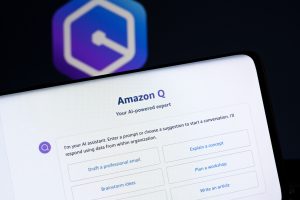
Facial recognition and detection applications are popping up everywhere, and when used responsibly, this can be a really great thing.
How many of us have used Snapchat to send a selfie with a crazy filter? And how often have we browsed through photos on Facebook to make sure we’re tagged or untagged, depending on how flattering the image turned out?
Apart from our lives on social media, recent advances in software used to digitally evaluate the contours of facial features have brought automatic facial recognition technology out of the research lab and into everyday usage.
Not only can facial recognition software and applications identify a person’s image in photographs and videos, but it can also do it in real-time.
From smart security cameras to digital medical applications, facial recognition software might help us in creating a safer, healthier future.
Let’s take a quick look at how the technology works and some common uses today.
How does facial recognition work?
Mathematically stored patterns have been used to distinguish between individuals for over a century. This is called biometric data.
First it was fingerprints, then voices, and more recently, irises. Now it’s faces that are coming under the gaze of the biometric-identification technology.
The practice of matching a face with one from a database involves a sequence of steps.
- Detection: A camera detects the target face. The face may be looking straight ahead or at an angle; it may be alone or among a crowd.
- Capture: An image of the target face is taken.
- Analysis: The software maps the image to determine the face’s topography. A comprehensive range of measurements are recorded, from basic dimensions, such as forehead-to-chin, eye separation, and eye socket depth, to more sophisticated clusters of dimensions that define the contours of lips, cheekbones, and ears, for example.
- Conversion: All the measurement data is brought together into an immutable mathematical formulation called a faceprint. The faceprint is an almost unique representation of the target face’s features.
- Comparison: The target’s faceprint is then evaluated against a database of faceprints. This may result in a full or high-percentage match, which indicates the target has been recognized.
What does this all mean in practice? Let’s explore.
Common Personal Uses of Facial Recognition Today
There is a lot happening in the world of facial recognition technology and with each development, ten more new ideas spring out.
Here are some of the more common uses in today’s world.
Unlocking Phones and Offices
Most recent smartphones offer the option of using facial recognition to unlock the device, so only the owner can gain access to the personal data contained within the phone.
According to Apple, the probability that a different person from the owner could unlock an iPhone by looking at it is approximately 1 in 1,000,000.
Additionally, facial recognition is being used to grant access to high-security buildings, such as laboratories, bank vaults, or storage rooms, where restricted access is necessary.
Facial recognition can allow everyone to go about their business without the need for special permits, keys, or pass codes. The entrance to each sensitive area will be programmed to restrict access to authorized faceprints only.
On top of that, facial recognition technology can be used to automate the process of signing in and out of your workplace or school.
Attendance can be determined accurately and in real time. This also improves security, as any unrecognized faces will be detected immediately – more on that later.
Social Media
Facebook’s popularity may be waning among younger generations, but this social media platform is still widely used around the globe.
Facebook facial recognition is used to analyze photos and videos they believe you’re in, like your profile picture and other uploaded photos and videos. You can keep an eye out for unflattering photos that should be untagged, and you can reach out to your friends to remind them that they promised not to post it in the first place.
To accomplish this, Facebook creates a unique number for you, called a template. When you turn on your face recognition setting, they use this template to compare to other photos, videos, and other places where the camera is used (like live video) to recognize if you appear in that content.
You can also help protect yourself and others from impersonation and identity misuse and improve platform reliability. For example, Facebook can detect if you appear in someone else’s profile picture and send you a notification. If you review the profile picture and think someone is impersonating you, you can report that profile.
Snapchat and Instagram also use facial recognition technology for tagging purposes, as well as their incredibly fun filters.
Home Security
Facial recognition technology isn’t just for phones and social media. As mentioned earlier, it can also be used for security. Here are a few examples for home use.
Netatmo
The people at Netatmo have created an indoor security camera with facial recognition technology that alerts you when people arrive in your home and identifies who they are. All you need to do is put it in your entryway, plug it in and set it up to your WiFi.
You can check the video feed on your phone from work or the grocery store to make sure your home is secure, and your kids are safe.
Ooma’s Face and Audio Recognition
Ooma’s home security system includes a smart-video camera with AI for both facial and audio recognition when a person comes into frame.
It also features geofencing capabilities and sensors so you can automatically arm and disarm it with a customizable radius, and it automatically calls the fire department if the sensors detect smoke.
Netgear Arlo
Joining the ranks of video home security, Netgear’s Arlo offers HD video surveillance with two-way audio, instant alerts when sound and motion are detected, and is recorded to the cloud for free.
The best part is you can check it on your phone, Apple TV, or laptop whenever you want.
The system can sync up to 15 cameras so you can keep a careful eye on every room of the house.
Honeywell
Honeywell also launched an indoor and outdoor facial recognition security system. By partnering with Amazon’s Alexa, it comes with all the perks of having a smart home system.
The system includes motion sensors, video recording and live streaming that you can check from a simple app on your smartphone.
Google Nest Cam
And for those of you who are ready for some serious security muscle, skip the guard and check out Nest Cam IQ Outdoor.
Made to withstand harsh weather and tampering, the Nest Cam IQ watches over your property, 24/7.
With the ability to detect a person from 50 feet away, you can get ahead of any unwanted guests. When used in conjunction with Nest Aware, the camera can also recognize familiar faces and send alerts to your phone through their app.
Nest Cam IQ has some impressive features to help keep your family safe and to not miss any special moments.
Personal Automobiles
As vehicles continue their transformation from mechanical machine to digital device, more and more manufacturers are incorporating face recognition technology into their autonomous cars.
Applications can range from monitoring the driver to alert you if you’re falling asleep to automatically adjusting the seat and mirror positions when the driver enters the car.
Other uses of face recognition for vehicles include using your face to replace a key as a means of opening and starting your car and recognizing your audio preferences by adjusting the radio station.
Facial Recognition and Crime Prevention
By accessing databases containing the faceprints of previously known suspects, law enforcement agencies can be alerted instantly when a known criminal is caught on camera, entering a retail establishment, for example.
Airports, customs, and border patrols have also embraced facial recognition, using their cameras to improve security while speeding up the flow of large numbers of people.
The technology is used in a variety of ways, from automatically comparing facial scans with passport images to identifying potential threats.
The US Government expects facial recognition to be utilized for over 97% of international air travelers by 2024.
Using facial recognition as a security measure for online banking, financial organizations can do away with passwords and one-time passcodes as it is virtually impossible for a criminal to hack someone’s faceprint.
Even if hackers tried to use a photograph of the owner, a technique called ‘liveness detection’ should distinguish that it is not the real thing.
The faces of missing people—from lost children to victims of human trafficking—can be uploaded to a database that alerts the relevant authorities when a match is detected. When the technology was trialed by Delhi police in 2018, they identified nearly 3,000 missing children in a matter of days.
Relevant to this use of facial recognition is the reality that the technology has reached a point where its continued development is necessitating updates to privacy laws. The scope of these use cases is concerning to privacy advocates, raising questions about the potentially abusive uses of facial recognition technology.
Addressing the potential for error and racial bias within face recognition and its applications is necessary to make these algorithms equitable and even more impactful, as argued by a recent study from Harvard University.
Facial Recognition and Improving Health Care
There are also more altruistic uses for facial recognition software.
Using facial recognition, the hospital check-in process can be greatly simplified by letting a person admit themselves to a facility without filling out any paperwork or showing identification – they simply let the system scan their face.
In addition to speeding up the process, facial recognition could be used to verify their identify and allow the provider to personalize their experience.
Patient care is streamlined by unlocking medical records to authorized personnel when and where they are needed. The technology can also help with diagnostics.
Face2Gene is an example of a healthcare app used by clinicians that can detect rare genetic conditions. Consider Cornelia de Lange syndrome, where patients have certain facial features that can be missed by physicians because they simply might not have come across it during their clinical practice.
This was the case with Omar Abdul-Rahman, a geneticist who recommended a specific genetic test for Mowat-Wilson syndrome for a three year old boy to order, which returned positive. Without facial recognition, this may have gone undiagnosed indefinitely.
Facial Recognition Tailors Ad Placements
Your faceprint provides a good indication of your age, gender, and more, which is valuable information for advertisers wanting to target their campaign to a particular demographic.
This technique has already been used to trigger personalized advertisements on a billboard in London’s Piccadilly Circus.
Another application is to monitor the genuine reaction of an audience to advertisements, movie trailers, and even television shows.
With all of this already going on, it will be interesting to see where this rise in facial recognition technology takes us.
Get the Facial Recognition Data You Need
Summa Linguae Technologies provides custom video & image data collection services to train your facial recognition technology.
We help companies like your build their biometric-enabled facial recognition technology for a variety of end-user genders, ethnicities, ages, and more.
Our extensive facial imagery data sets are ideal for testing and training AI-powered face-processing systems.
Get to know your customers better with better biometric-identification data from Summa Linguae. Contact us today to get started.


